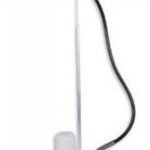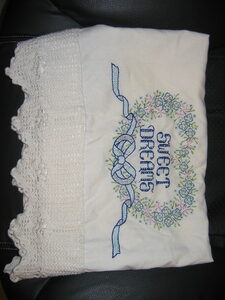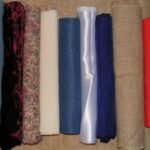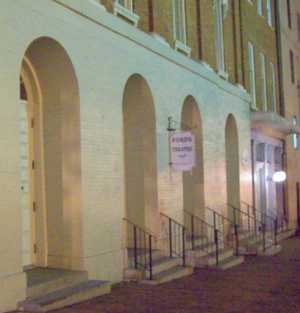If you have no experience sewing, I really recommend starting with simple projects for which you don’t need a pattern. Things like pillowcases, pincushions and simple purses are easy enough to sew without using a pattern, and will give you confidence and good practice operating your machine. These will be helpful to have before you start to sew clothes using commercial patterns.
Choosing a Pattern:
After you have become comfortable with stitching on your machine, you are ready to start sewing simple garments using easy patterns. You need to know that not all commercial sewing patterns labeled as “easy” really are. I have seen many more complicated garments labeled as easy patterns, and I feel sorry for the beginning seamstress who chooses one of these. Starting to sew with a dress pattern that has princess seams and a back closure sounds like a recipe for disaster to me!
I suggest choosing for your first pattern a garment which does not have closures such as a buttons and buttonholes or zippers. Select a simple pullover style top or dress, or drawstring or elastic waist pants with a casing. Choose a pattern that calls for woven fabrics; do not start your garment sewing experience by trying to sew anything with knits! Choosing an appropriate pattern will ensure your success.
You could try a simple garment from any pattern manufacturer, but I particularly like Simplicity patterns for beginning to sew garment patterns. The instructions on Simplicity patterns are often clearer, more detailed, and easier to follow than many other patterns. Please note that the larger fabric stores frequently run these patterns dramatically discounted on sale. It will save you a lot of money to get your name on the mailing list of fabric stores in your town; then you can watch the sales and only buy what you need when it is on sale. If you are not receiving fabric store mailings yet, check online for current sale flyers. It is also easy to find both current and vintage patterns available for pennies at thrift stores and yard sales.
The back of the envelope:
Once you select a suitable beginner pattern, read the back of the envelope carefully. This is where you will find what fabrics are suggested for the project, as well as how much yardage will be required. Pay attention to the suggested fabrics and buy enough yardage to complete your project. You need to know that the size you will need to make will likely be larger than your normal size. I always need a size 6 in “ready to wear” dresses or pants purchased in stores, and was surprised to know that for making my own clothes, I need a size 12. For some garments, I even need to make a size 14! Any storebought dress or pants in a size 14 would be much too large for me, but pattern sizing is different. The back of the envelope will list the measurements for each size. It will be helpful to measure yourself and write these measurements down before you go to the fabric store.
The envelope back will also list any notions you will need for your garment. Be sure to buy what you need! Once again, if this list includes zippers or buttons, choose a different pattern to start with. Many easy patterns will require elastic, however. Elastic comes in many sizes, or widths, so be certain to buy the size called for on the back of the envelope.
Helpful Notions:
There are a few additional helpful notions you might like to buy at the store. Most helpful will be a folding cardboard cutting board. These cost less than $10 and are well worth the money you will spend. You can lay your fabric and pattern out on one of these boards, and pin the pattern pieces over the fabric. The cardboard holds the pins steady. I particularly recommend having one of these if you will be using the floor for laying out and cutting your pattern.
But you don’t have to use pins to hold your pattern steady. I have heard of people using tape for this, although I never have. What I prefer is to use pattern weights for holding everything together. I used to use canned goods for this, and this will certainly work in a pinch. Pattern weights are much nicer, however. You can buy them on the notions wall at your fabric store, or do what I did, and buy large washers from the hardware store. These are less expensive than pattern weights and work just as well. I bought a dozen 2 inch brass washers from Lowe’s. You could even cover these in fabric to make them cute.
You will also want to have some kind of marking tool. There are many styles to choose from, from water erasable marking pencils in several colors, to pens with disappearing ink, to different kinds of chalk. I usually use the marking pencils, and sometimes use chalk. You can choose any of these, but be sure to have something to use for marking detail placement on your garment pieces before construction.
Another thing you may like to buy is a roll of tracing paper. If you have some, you can trace the pattern in your size and cut that out, leaving the pattern pieces in the envelope intact. This will of course greatly extend the life of your tissue patterns. This is not necessary however, and you can just cut the tissue pattern instead. I don’t cut my size, but cut the pattern out following the outline for the largest size, and then I fold the pattern down to the outlines for my particular size. This way, I can make the pattern in a larger size later if I want.
The Pattern Directions:
Before you trace or cut your pattern, pull out the instruction sheets for your chosen pattern. Study them carefully. First, read the step by step sewing instructions, and make certain you understand each step. Then look at the other information found here. The instruction sheet will tell you what sewing allowance is included. This is usually 5/8″ on garment patterns, but can vary, so be certain you know what seam allowances are included in the pattern you are making.
Next, study the cutting layout. The instructions will include a diagram of how the pattern pieces should be arranged on your fabric before cutting out. This is important! For one thing, it is important to lay each piece correctly on the grain or your finished garment may not hang right. Also, if you purchased exactly the amount of fabric called for on the envelope back, then you will only have enough fabric if you follow the recommended layout precisely.
Preparing your garment pieces for sewing:
Lay out your fabric with the pattern pieces on top, following the recommended layout. Take care to make sure that the fold of the fabric is aligned according to the diagram, and that the correct side is facing up. The diagram will instruct you to fold the fabric with right sides together or wrong sides together, be certain that you follow the directions! Sometimes, some of the pattern pieces will need to be turned right side down on the fabric, here again, study the diagram carefully to ensure that you have everything laid out exactly right! Pin everything down, or use your pattern weights.
Now, cut out your garment pieces. Be sure to also cut out any notches or tabs that are included in the pattern. These are indicated by small triangles along the edges of the pattern. Just cut these triangles extending from your seam allowance. These will help you to ensure that your pieces are aligned together properly when you sew them together.
After you have cut each piece, you will need to transfer any dots or other markings to the back of your garment pieces. Be sure that you do not skip this step! The dots will mark things like the beginning and end of any gathering or ease stitching you need to do, and if you don’t mark them, you could easily end up with a wonky garment! Taking the time to follow all instructions will ensure that you make a garment you can wear proudly.
Sewing Your Garment:
Of course you will consult the instructions and follow them carefully in sewing your garment together. The most helpful tip I have to share with you concerns these steps. When you sew the pattern pieces together, set your stitch length for a long stitch and sew the pieces together using this basting stitch. Then you can check fit and ensure you have sewn the pieces properly together. If you have accidentally sewn something together wrong, or if you need to make adjustments for fit, these basting stitches will be easy to remove. If you are satisfied with the fit, then you will go back and resew these seams, using a shorter stitch and backstitching the beginning and end of each seam.






